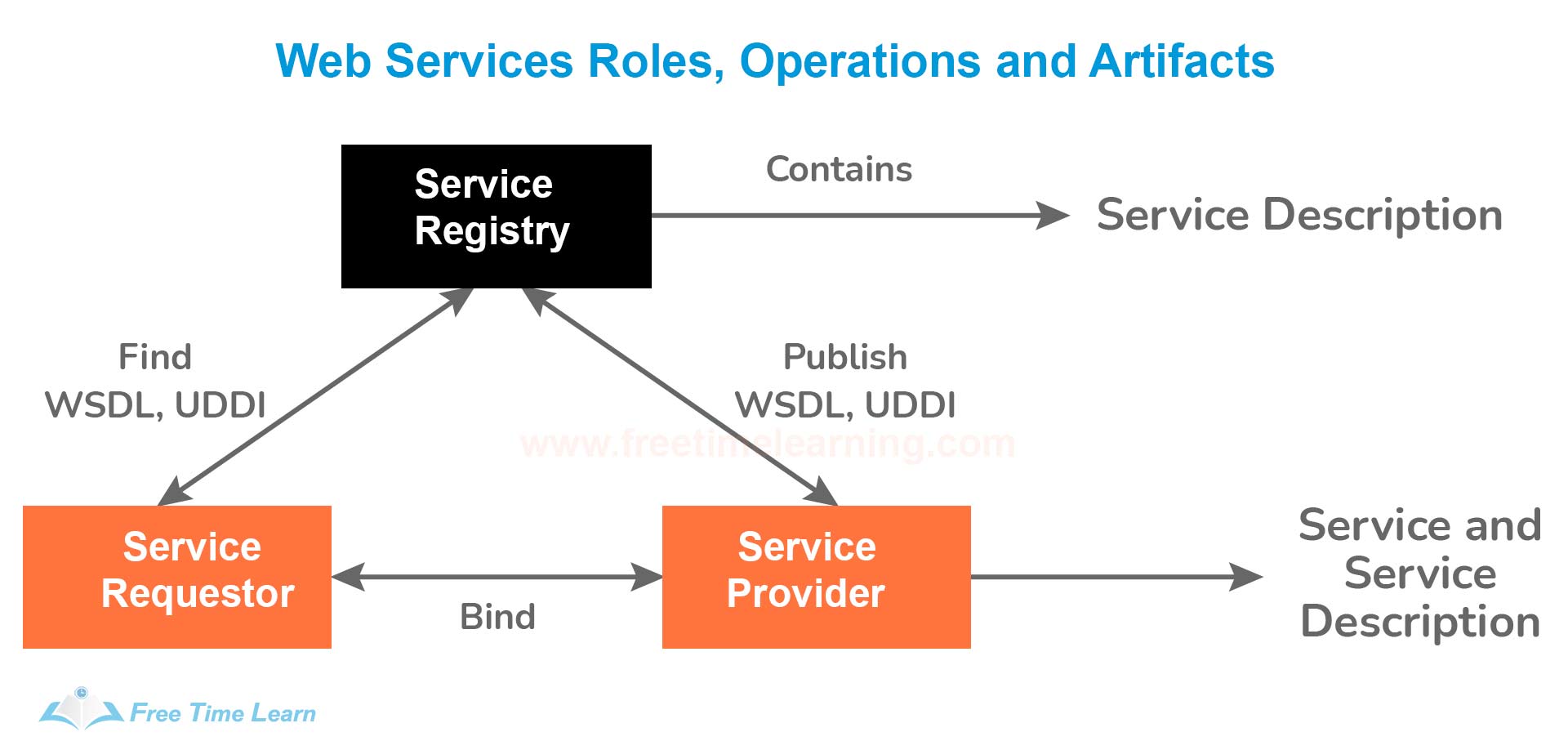WSDL stands for Web Services Description Language. It is an XML document containing information about web services such as method name, method parameter. The Client needs a data dictionary which contains information about all the web services with methods names and parameters list to invoke them for the web services. The Web Service Description Language bridge up this gap, by providing all necessary information to the client.<message> : The message element in WSDL is used to define all different data elements for each operation performed by the web service.<portType> : The port type element is used to determine the operation which can be performed by the web service. This operation can have two messages one is input and the second one is the output message.<binding> : This element contains the used protocol.UDDI stands for Universal Description, Discovery and Integration. It is a XML based framework for describing, discovering and integrating web services. It contains a list of available web services. WSDL is the part of UDDI. REST stands for Representational State Transfer. It is an architectural style. It is not a protocol like SOAP. | API | Web Service |
| It can be online or offline. | It must use a network. |
| They are lightweight architecture. | They require SOAP to send and receive network data therefore, are not lightweight architectures. |
| It can use any design style or protocol. | It can only use SOAP but sometimes UDDI, XML, RPC, and REST also. |
| It supports HTTP/HTTPS protocol and also supports XML and JSON. | It supports HTTP protocol and also supports XML. |
| It doesn’t require any network for its operation. | It requires a network for its operation. |
| They are open source and are used for XML. | They are not open source and are used to understand JSON (JavaScript Object Notation). |
XML-RPC that includes : XML to encode its calls and HTTP as the transport protocol
<protocol>://<service-name>/<ResourceType>/<ResourceID><Port> element is related to a distinct binding by defining an individual endpoint. A <Port> element has the following two attributes :ASP.NET services regularly. It can be done by making a call for the URL of .asmx file is made in the browser, which shows complete information regarding web services on the page. .NET by applying HTTP handlers, which are used to interrupt requests to the .asmx files. @WebService
@WebMethod
@SOAPBinding<?xml version="1.0" encoding="UTF-8"?>
<endpoints xmlns="http://java.sun.com/xml/ns/jax-ws/ri/runtime" version="2.0">
<endpoint
name="HelloWorldWS"
implementation="org.arpit.javapostsforlearning.webservice.HelloWorldImpl"
url-pattern="/HelloWorldWS"/>
</endpoints><?xml version="1.0"?>
<soap:Envelope
xmlns:soap="http://www.w3.org/2001/12/soap-envelope"
soap:encodingStyle="http://www.w3.org/2001/12/soap-encoding">
...
Message information
...
</soap:Envelope>xmlns:soap=http://www.w3.org/2001/12/soap-envelopereturn Response.status(422).entity(exception).build();
return Response.ok(response).build(); //200using System;
using System.Web.Services;
using System.Xml.Serialization;
[WebService(Namespace="http://localhost/MyWebServices/")]
public class FirstService : WebService{
[WebMethod]
public int Add(int a, int b) {
return a + b;
}
[WebMethod]
public String SayHello() {
return "Hello World";
}
}